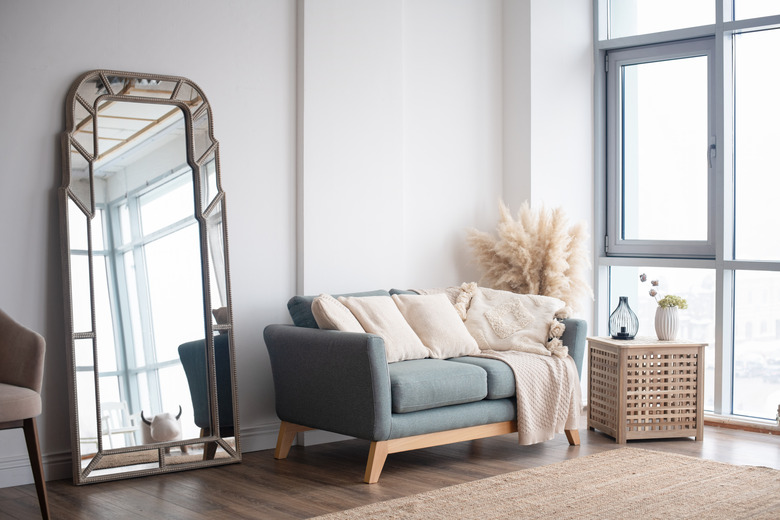How To Fix Black Spots On Old Mirrors
We may receive a commission on purchases made from links.
Mirrors commonly begin showing their age over time, often by developing black spots or other unwanted blemishes. Many homeowners spot these imperfections and immediately jump to the conclusion that replacement is the only solution. Completely fixing black spots on mirrors can be a challenging process, but worth it if you're determined. You can also try a simple hack that will easily do the trick.
Why Mirrors Get Black Spots
Why Mirrors Get Black Spots
Excessive moisture is often to blame when it comes to mirrors developing black spots. Known as desilvering or mirror rot, these black spots often develop along the edges of older or antique mirrors, particularly those kept in bathrooms. Mirrors each have a protective coating on their backside, protecting the silver nitrate that turns what would be regular glass into a reflective surface. Unfortunately, this protective coating can wear away after repeated exposure to different elements, such as moisture, temperature changes, corrosive cleaning solutions, and air. Without this protective coating, a mirror's silver nitrate begins to chip away, and the mirror develops those dreaded black spots.
Quickly catching and fixing black spots on mirrors is key because mirror rot can spread if left untreated. Before long, your mirror can become increasingly obstructed by these unwanted blemishes. Luckily, fixing black spots on mirrors is possible.
Fixing Black Spots on Mirrors
1. Remove Existing Silvering
The most effective way to fix black spots on mirrors is to completely remove the existing protective layer and silvering and then recover the surface in fresh coats of both. First, target your mirror's protective layer with a paint and varnish remover. Donning gloves, gently pat the solution onto the back of the mirror's protective coating and leave the stripper to loosen the paint. This can take from 15 minutes to a few hours. Using a plastic paint scraper, gently try to peel off the paint. It should peel off easily. If it doesn't, leave the remover on longer.
2. Clean the Glass Thoroughly
Once the metal coating on your mirror is fully exposed, you'll want to clean it thoroughly. Dilute metal cleaner with a bit of water and use cotton balls to wipe the entire surface clean. Next, apply mirror remover to your cleaned surface and watch the silvering dissolve instantly. Rinse off your now-cleaned glass with warm, soapy water and dry it completely.
3. Apply Fresh Silvering and Seal
On a clean work surface, reapply a fresh coat of silvering, using a silvering kit and following its instructions. Once the silver coating is dry, layer a sealing coat of clear protectant over top. Further seal your work with an edge protectant for an even more effective guard against future black spotting.
Quicker Mirror Rot Fixes
Quicker Mirror Rot Fixes
If completely resilvering the back of your mirror feels too extreme, there are quicker solutions you can try first. One simple tip is to cover the black spots with aluminum foil. Tear off small bits of aluminum foil and use clear adhesive tape to secure them over the dark spots. Make sure that the shiny side of the foil is against the back of the mirror and that the foil pieces are as flat and smooth as possible. Another simple hack to try is covering the entire back of your mirror with a mirrorlike spray or an adhesive mirror sheet.
How to Protect Your Mirror From Future Damage
How to Protect Your Mirror From Future Damage
Moisture reaching your mirror's edges is the main culprit for mirror rot. Therefore, framing your mirrors is a great way to protect against future black spots. You can also try taping a desiccant package to the back of your mirror to help absorb excess moisture. Weatherproofing of any kind will help mirrors in the long run. The biggest trick to preserving your mirrors, though, is to diligently wipe away wet spots quickly, particularly when you're washing your face or brushing your teeth.
